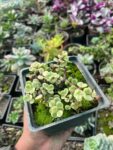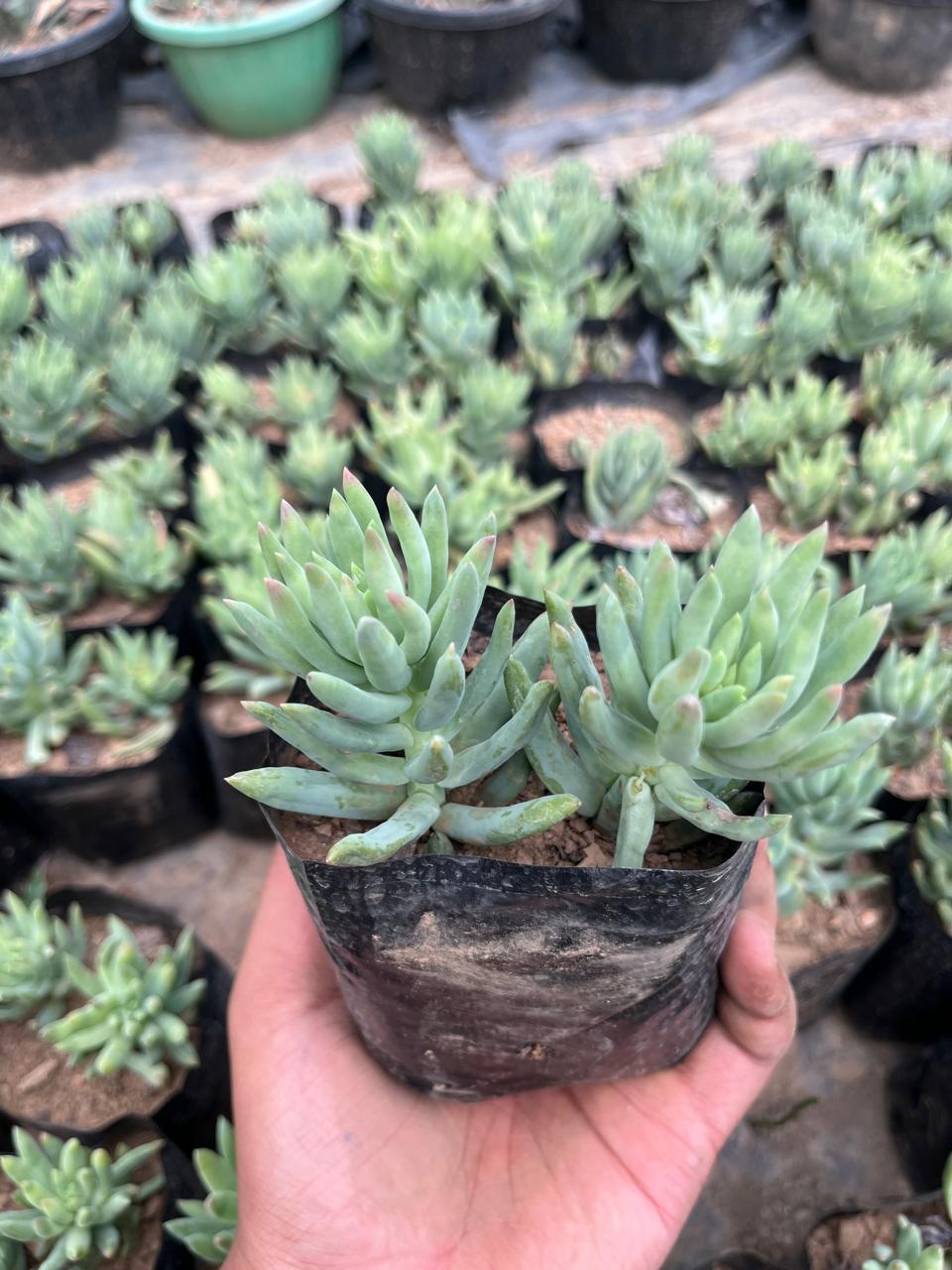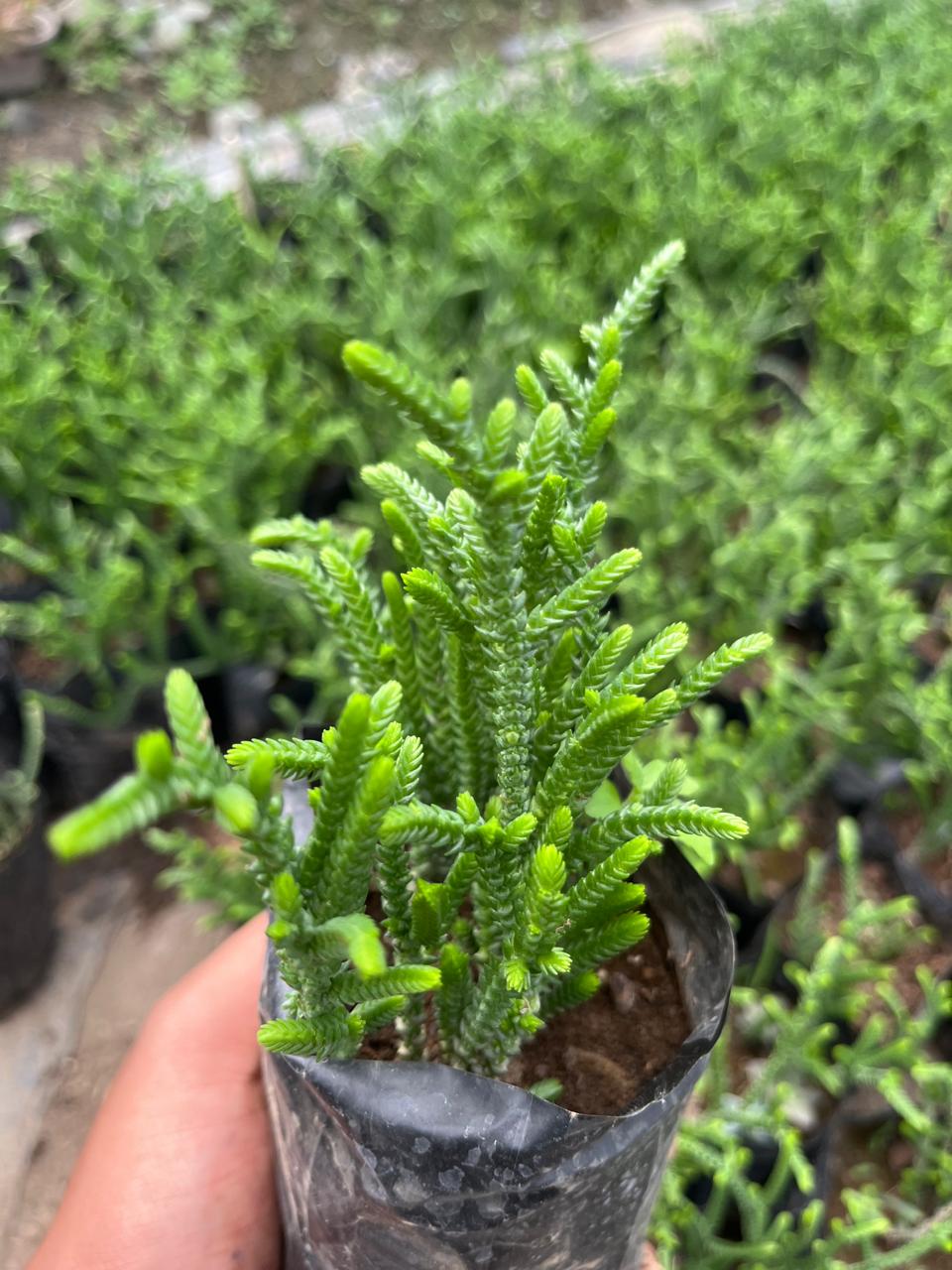Variegated Portulacaria Afra
Original price was: ₹100.₹49Current price is: ₹49.
... people are viewing this right now
Description
- Dispatch in 2-3 days
- Country of origin: India
- It’s Compulsory to make an unboxing video of the parcel for refunds within 24 hours.
- Bare Rooted
Variegated Portulacaria afra, also known as Variegated Elephant Bush or Variegated Dwarf Jade Plant, is a popular succulent known for its attractive variegated foliage. It is a versatile plant that can be grown as a houseplant, in a succulent garden, or even as bonsai.
Key Characteristics of Variegated Portulacaria Afra:
- Foliage: The variegated form of Portulacaria afra features small, oval-shaped leaves that are green with creamy white or yellow margins. The variegation adds a beautiful contrast, making the plant stand out in any collection. The leaves are fleshy and store water, typical of succulents.
- Stems: The plant has reddish-brown, woody stems that provide a nice contrast to the light-colored leaves. As the plant matures, the stems become thicker and more tree-like, which is why it’s often used in bonsai.
- Size: Portulacaria afra can grow quite large in its native habitat, reaching up to 15 feet (4.5 meters) in height. However, when grown as a houseplant or in a pot, it typically remains much smaller, around 2 to 4 feet (0.6 to 1.2 meters) tall, depending on pruning.
Care Tips for Variegated Portulacaria Afra:
- Light: This plant thrives in bright, indirect light to full sun. If grown indoors, place it near a sunny window, such as a south or west-facing window. Outdoors, it does well in full sun to partial shade. The more light it receives, the more vibrant the variegation will be.
- Watering: Water using the “soak and dry” method, allowing the soil to dry out completely between waterings. During the growing season (spring and summer), water more frequently, but reduce watering in the winter when the plant’s growth slows down. Overwatering can lead to root rot, so it’s important not to let the soil stay wet.
- Soil: Use a well-draining soil mix, such as a cactus or succulent mix. You can add perlite or sand to improve drainage further. Good drainage is essential for preventing water from sitting at the roots, which can cause rot.
- Temperature: Portulacaria afra prefers warm temperatures and is not frost-tolerant. It does best in temperatures between 65°F and 85°F (18°C to 29°C). If you live in a cooler climate, bring the plant indoors or protect it from frost during the winter.
- Propagation: This plant is easy to propagate from stem cuttings. Simply cut a healthy stem, let it callous over for a few days, and then plant it in well-draining soil. It will root quickly and start to grow.
- Pruning: Portulacaria afra responds well to pruning and can be shaped as desired, making it a popular choice for bonsai. Regular pruning can help maintain a compact shape and encourage bushier growth.
- Maintenance: This plant is low-maintenance and relatively pest-resistant. However, it can occasionally attract mealybugs or spider mites, so keep an eye out and treat any infestations promptly.
























Reviews
There are no reviews yet.